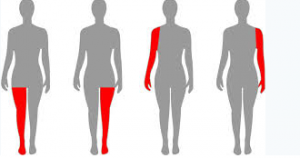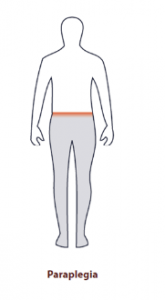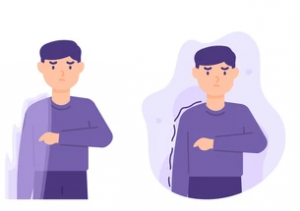Overview
Multiple myeloma happens when healthy cells turn into abnormal cells that multiply and produce abnormal antibodies called M proteins. This change starts a cascade of medical issues and conditions that can affect your bones, your kidneys and your body’s ability to make healthy white and red blood cells and platelets. As multiple myeloma gets worse, those plasma cells begin to spill out of your bone marrow and spread through your body.
Some people have multiple myeloma without symptoms but blood tests show signs of conditions that may become multiple myeloma. In this case, healthcare providers may recommend watchful waiting or monitoring your overall health rather than starting treatment. Healthcare providers can’t cure multiple myeloma, but they can treat related conditions and symptoms and slow its progress.
Causes
Multiple myeloma symptoms develop over time and may resemble other medical conditions or diseases. Here are some of the conditions linked to multiple myeloma and their causes:
- Anemia: You don’t have enough red blood cells because multiplying abnormal plasma cells don’t leave room for your red blood cells.
- Bacterial infection, particularly pneumonia: Like red blood cells, abnormal plasma cells are multiplying and crowding healthy white blood cells that fight infection.
- Thrombocytopenia: You don’t have enough platelets — the cells that help your blood to clot — because abnormal plasma cells crowd out those platelets and keep your bone marrow from making enough platelets.
- Bone pain/bone fracture: Bone pain and/or fracture can happen if abnormal plasma cells destroy bone tissue, causing a soft spot in your bone. These are osteolytic lesions.
- Kidney problems/failure: Your kidneys filter waste and toxins. Abnormal plasma cells make M proteins that block the filtering process and damage your kidneys.
- Amyloidosis: This disease happens when abnormal proteins (amyloid proteins) build up in your organs.
- Hypercalcemia: This condition happens when damaged or weakened bones release too much calcium into your bloodstream.
- Hyperviscosity syndrome: M proteins — proteins made by abnormal plasma cells — thicken your blood. Your heart has to work harder to pump blood through your body.
- Cryoglobulinemia: Multiple myeloma can make proteins in your blood clump together when it’s cold.
Symptoms
Multiple myeloma causes many symptoms, but bone pain often is the first symptom people notice. Other symptoms include:
- Weakness in your arms and legs and/or a sensation of numbness in your arms and legs. Multiple myeloma can affect the bones in your spine, causing them to collapse and press on your spinal cord.
- Having fatigue — feeling so tired you can’t manage daily activities — and feeling weak. These are signs of anemia.
- Nausea and vomiting. This may be a sign of hypercalcemia.
- Not having an appetite and/or feeling thirstier than usual. These may be signs of hypercalcemia.
- Unexplained weight loss.
- Unexplained fever. This may be a symptom of a bacterial infection.
- Bruising or bleeding more easily. This may be a sign abnormal plasma cells prevent your body from producing enough platelets. Platelets help your blood to clot.
- Feeling confused or “foggy.”
Multiple Myeloma Diagnosis
To confirm a diagnosis, you might have blood tests including:
- Complete blood count (CBC): This test measures your red and white blood cell numbers, the amount of hemoglobin in your red blood cells and your red blood cell concentration level.
- Blood chemistry test: This test shows your creatine levels (how well your kidneys work), albumin levels (this is a protein), calcium levels and lactic dehydrogenase levels (LDH). LDH is a tumor marker. A tumor marker is a substance in cancerous cells or healthy cells responding to cancer.
- Quantitative immunoglobulin test: This blood test measures the levels of certain antibodies in your blood.
- Electrophoresis: This test looks for M proteins in your blood.
- Urine tests: Healthcare providers may ask you to collect your urine at home over a 24-hour period so they can test for Bence Jones protein, another sign of multiple myeloma.
- X-rays: Healthcare providers use X-rays to look for bones damaged by multiple myeloma.
- Computed tomography (CT) scan: This is another way to look for bone damage.
- Magnetic resonance imaging (MRI): This test uses radio waves and strong magnets to create detailed images of your bones and spine. Healthcare providers may use this test to look for plasmacytomas. These are single groups of abnormal plasma cells.
- Positron emission tomography (PET) scan: This is another test for plasmacytomas.
- Bone marrow biopsies: Healthcare providers may do bone marrow biopsies to analyze the percentage of normal and abnormal plasma cells in your bone marrow. They may also test your bone marrow sample for changes in your DNA that may drive cancer growth.
Multiple Myeloma Complications
Multiple myeloma can cause problems including:
- Bone problems. Your bones can become weaker, leading to fractures.
- Blood problems. You might get anemia, which means your body doesn’t have enough red blood cells. This can make you tired and pale and cause heart problems. You might also have too few platelets, which makes it harder for your blood to clot.
- Infections. When you have myeloma, your body produces a lot of weak antibodies that crowd out healthy ones, making it harder for you to fight infection. A lack of white blood cells can also weaken your immune system.
- Kidney damage. Myeloma can clog your kidneys so they don’t filter the way they should. This might lead to kidney failure.
The staging process for multiple myeloma starts with placing the condition in one of four classifications:
- MGUS: Blood tests show small amounts of M protein. About 1 % to 2% of people with MGUS develop multiple myeloma.
- Solitary or isolated plasmacytomas: These are single groups of abnormal plasma cells.
- SMM: This is a pre-cancerous form of multiple myeloma. People who have SMM may have mild symptoms along with tests showing small amounts of M protein in their blood and an increased number of plasma cells in their bone marrow.
- Multiple myeloma: This classification means tests show multiple groups of abnormal plasma cells, high M protein levels in blood or urine and a high percentage of abnormal plasma cells in bone marrow. People in this classification often have anemia, hypercalcemia, kidney failure and osteolytic lesions.
Healthcare providers use the Revised International Staging System (R-ISS) to stage multiple myeloma. The RISS system is based in part on blood tests that show the levels of albumin, beta-2 microglobulin and lactate dehydrogenase. Healthcare providers also consider tests for specific gene abnormalities.
Management and Treatment
Some treatments healthcare providers may use if you have symptoms caused by multiple myeloma include:
- Pain medications:People often have significant bone pain.
- Antibiotics:A weakened immune system can lead to more infections. Your doctor may prescribe antibiotics to clear up these infections.
- Steroids: High doses of steroids can kill cancer cells and reduce inflammation.
- Chemotherapy: Healthcare providers use chemotherapy to reduce the number of abnormal plasma cells.
- Immunotherapy:This treatment stimulates your immune system so it develops more cancer-fighting cells.
- Radiation therapy: This treatment kills cancer cells and reduces bone tumors.
- Stem cell transplants: Stem cells are specialized cells in your bone marrow or blood that can help produce healthy new plasma cells. Healthcare providers typically recommend autologous stem cell transplants. This treatment replaces damaged or unhealthy stem cells with healthy stem cells from your body. Rarely, you may receive healthy plasma stem cells from a donor. This is an allogenic stem cell transplant.
Conclusion
Multiple myeloma happens when healthy plasma cells become abnormal cells that multiply and produce abnormal antibodies. People live 10 years or more with multiple myeloma. As with most types of cancer, early diagnosis and treatment help people live longer. While there is no cure for multiple myeloma, it can treat related conditions and symptoms and slow its progression.
Further if you or your loved ones godforbid come across any such kind of disease we global treatment services can assist you with right doctors and hospital for the best treatment, what you need do is send us all the latest reports of the patient on +91 +9880149003 or you can email us on query@gtsmeditour.com
We shall assist you get the right treatment abroad with all needed support.
Happy to assist..!
Than you














